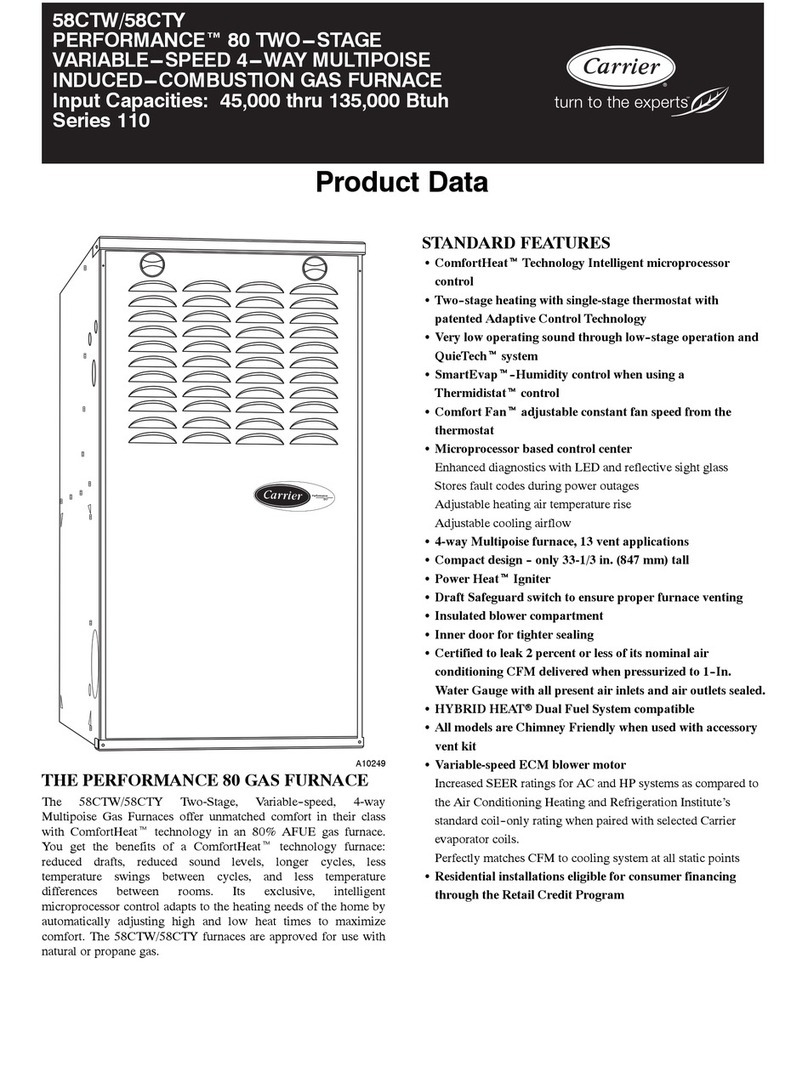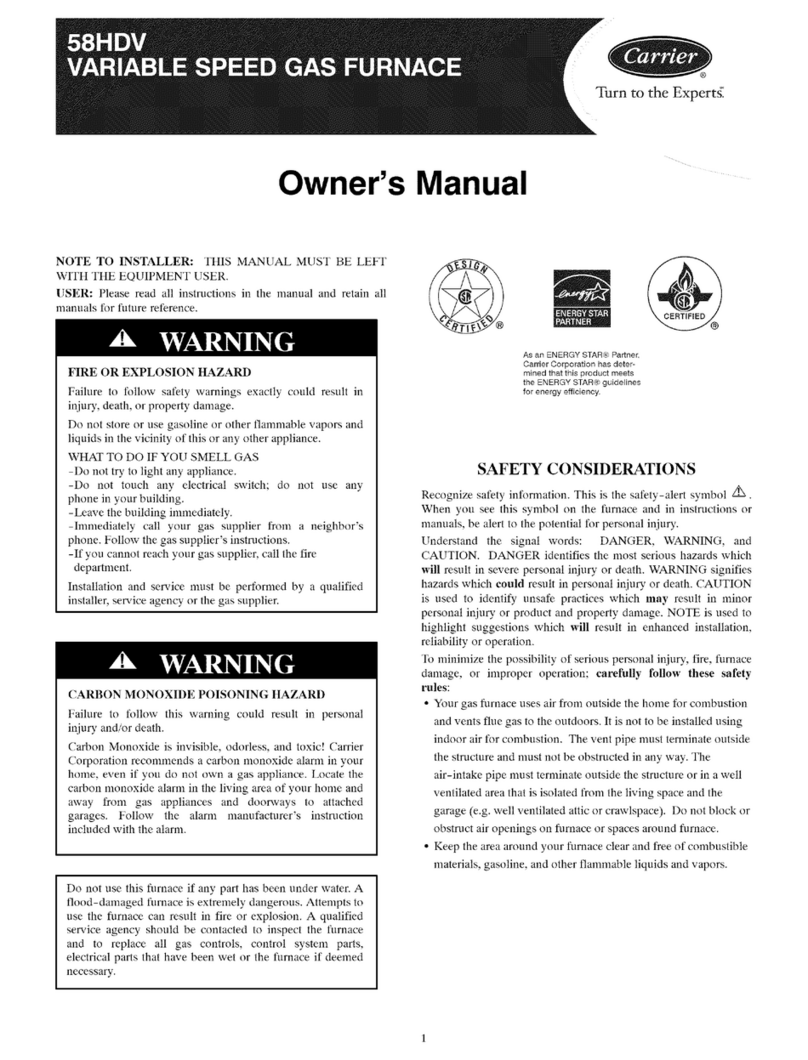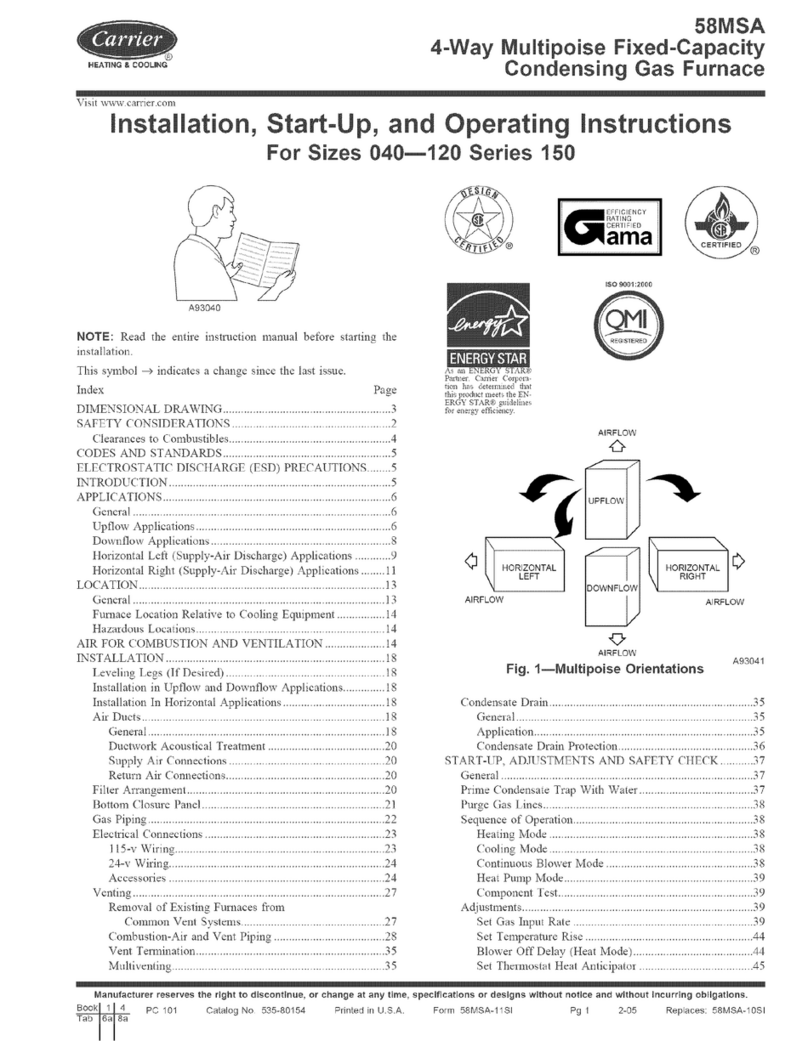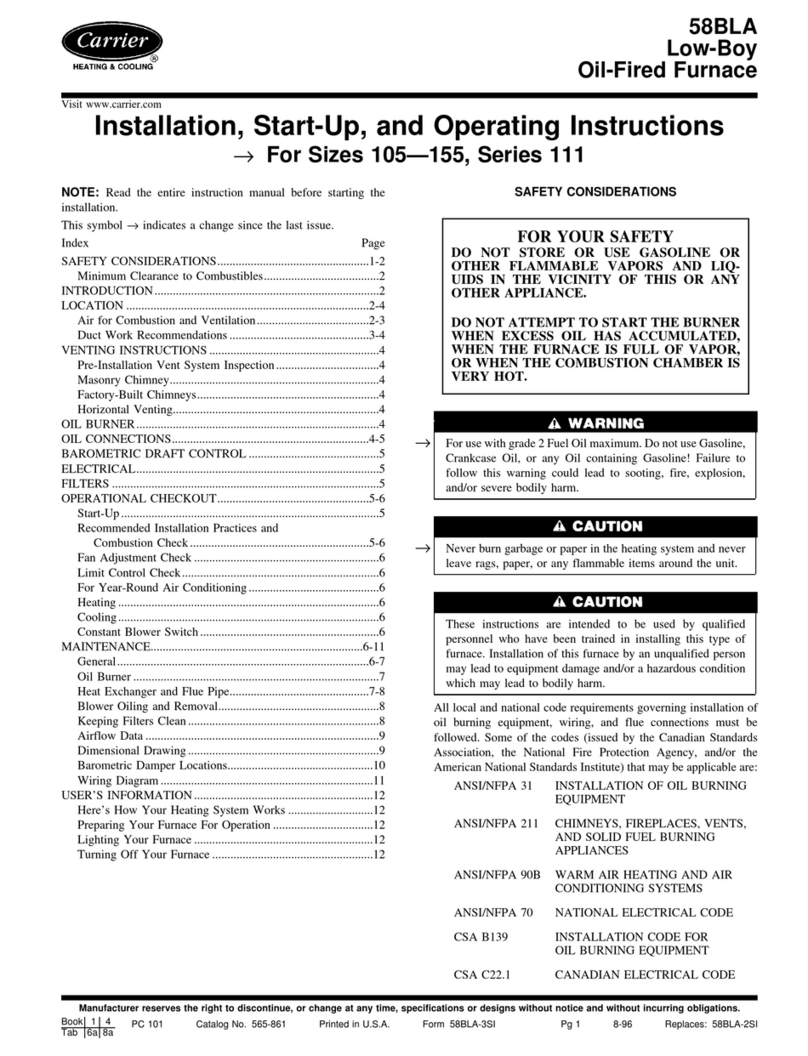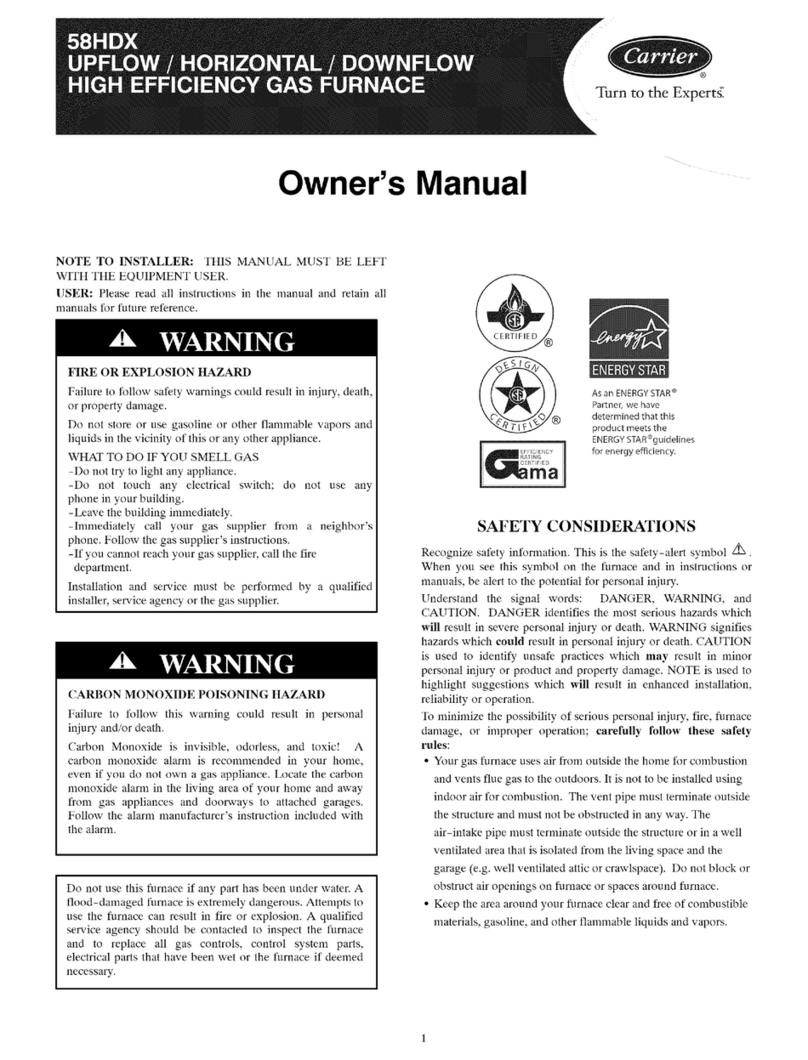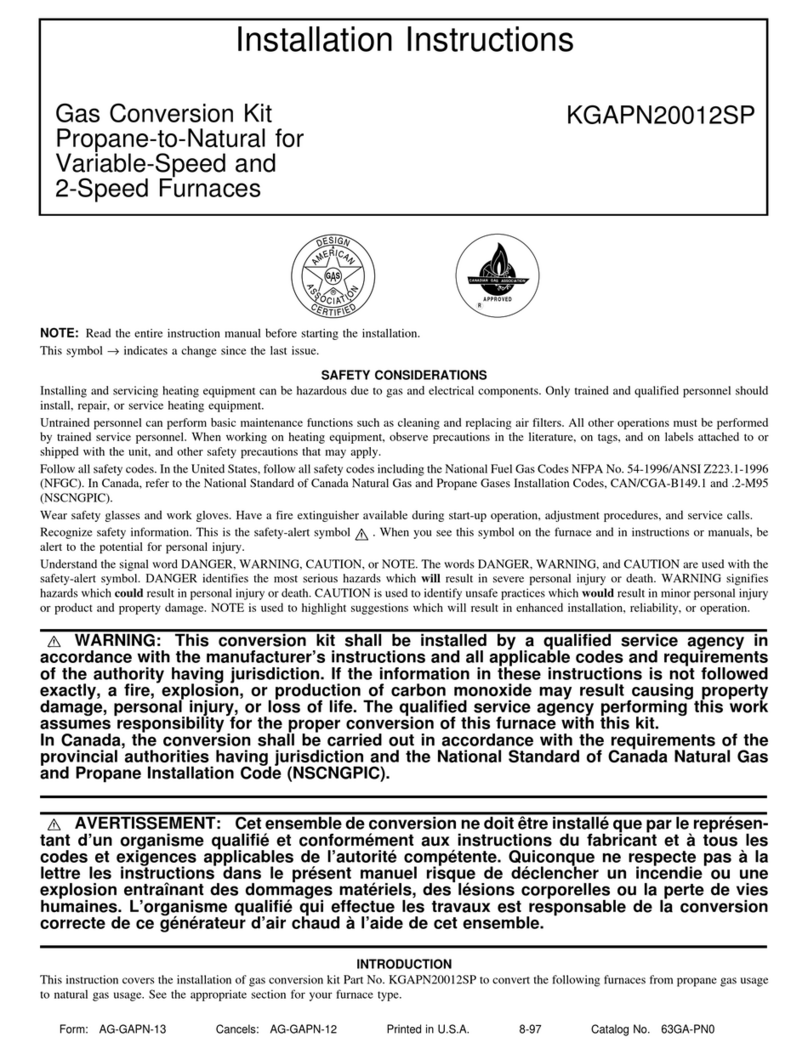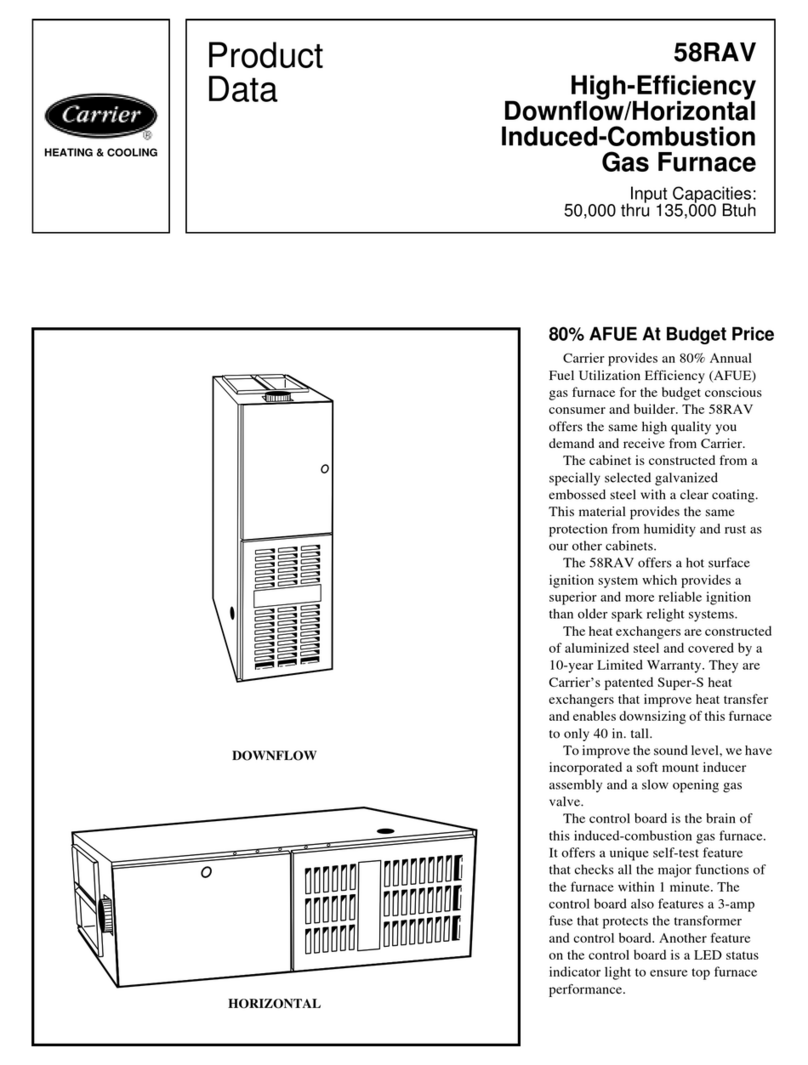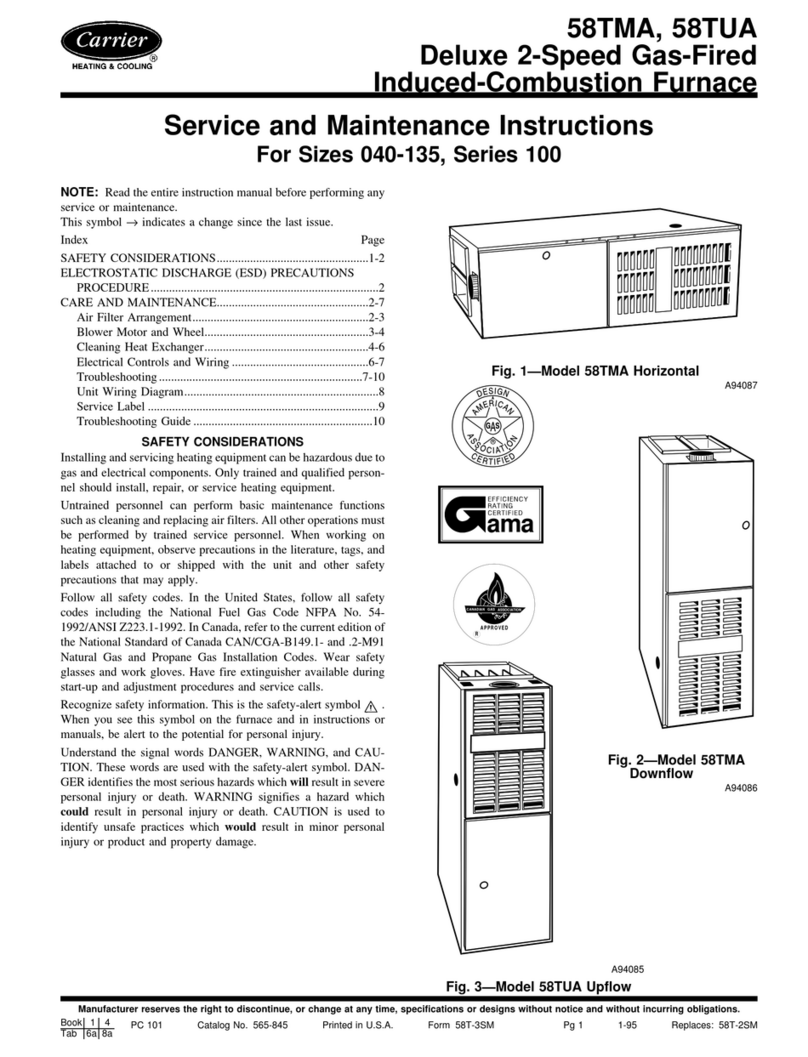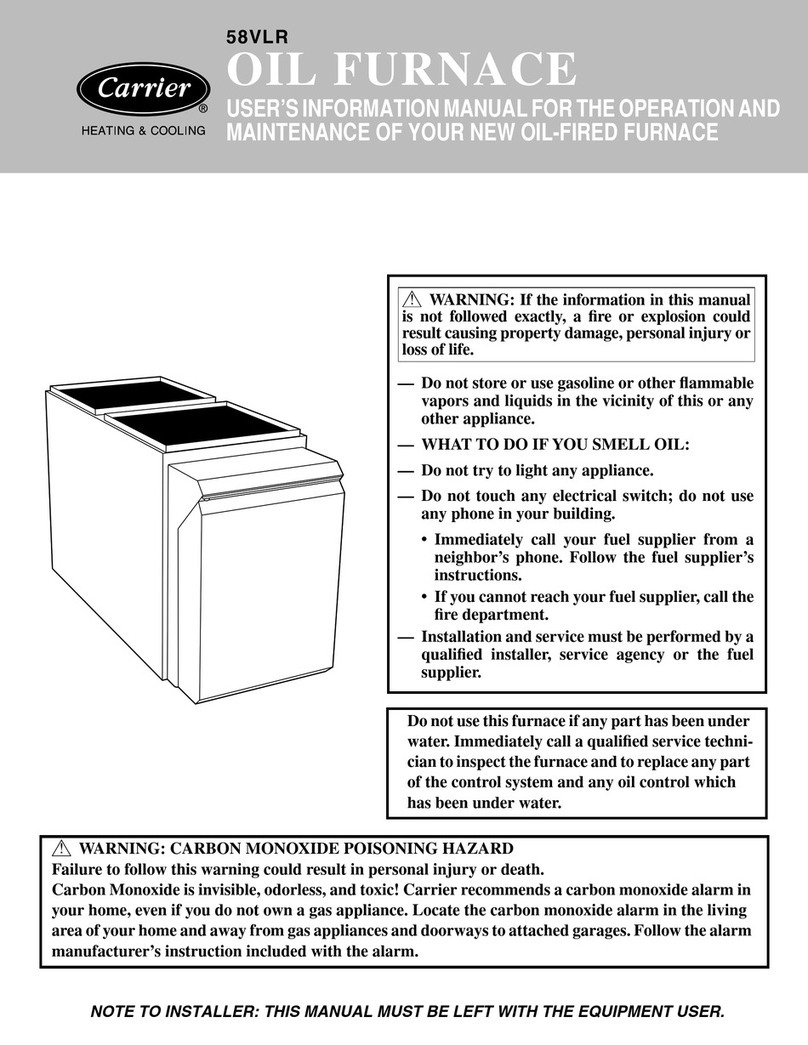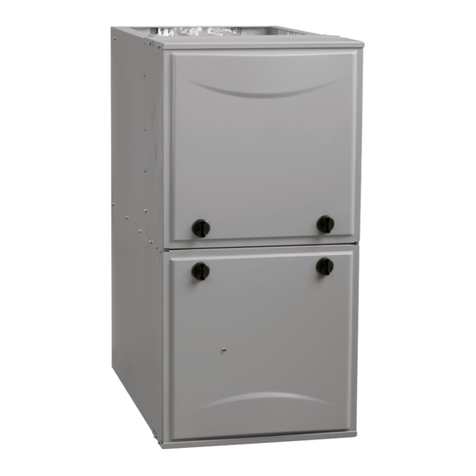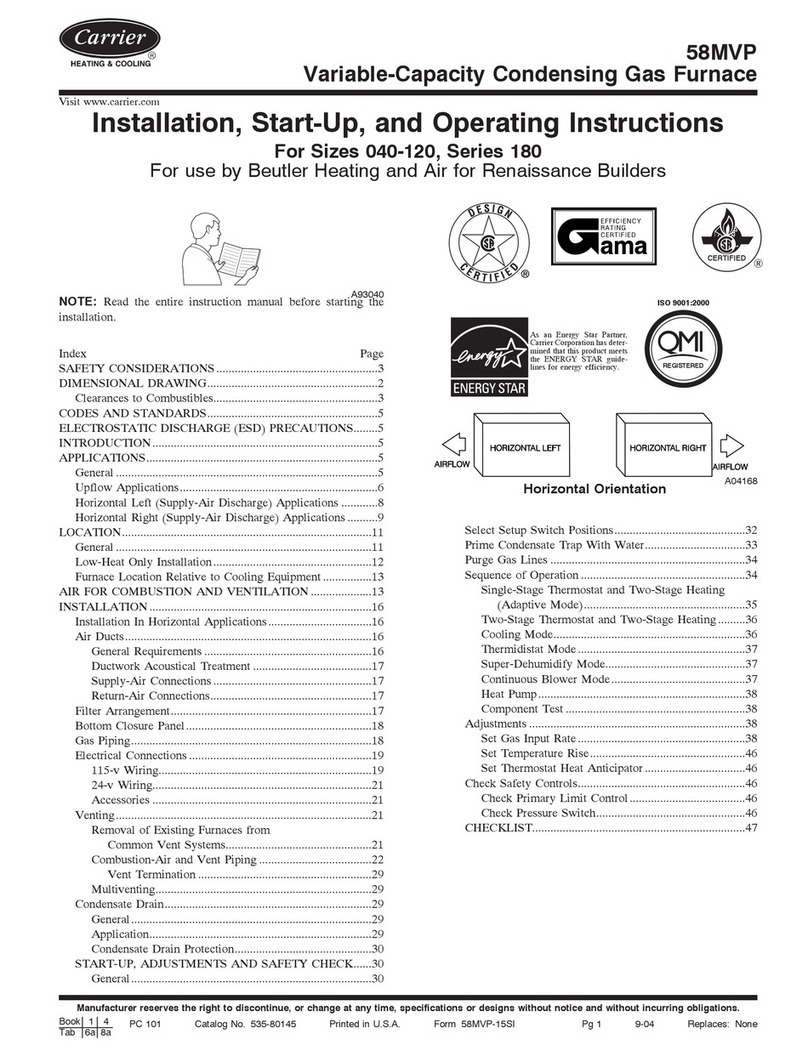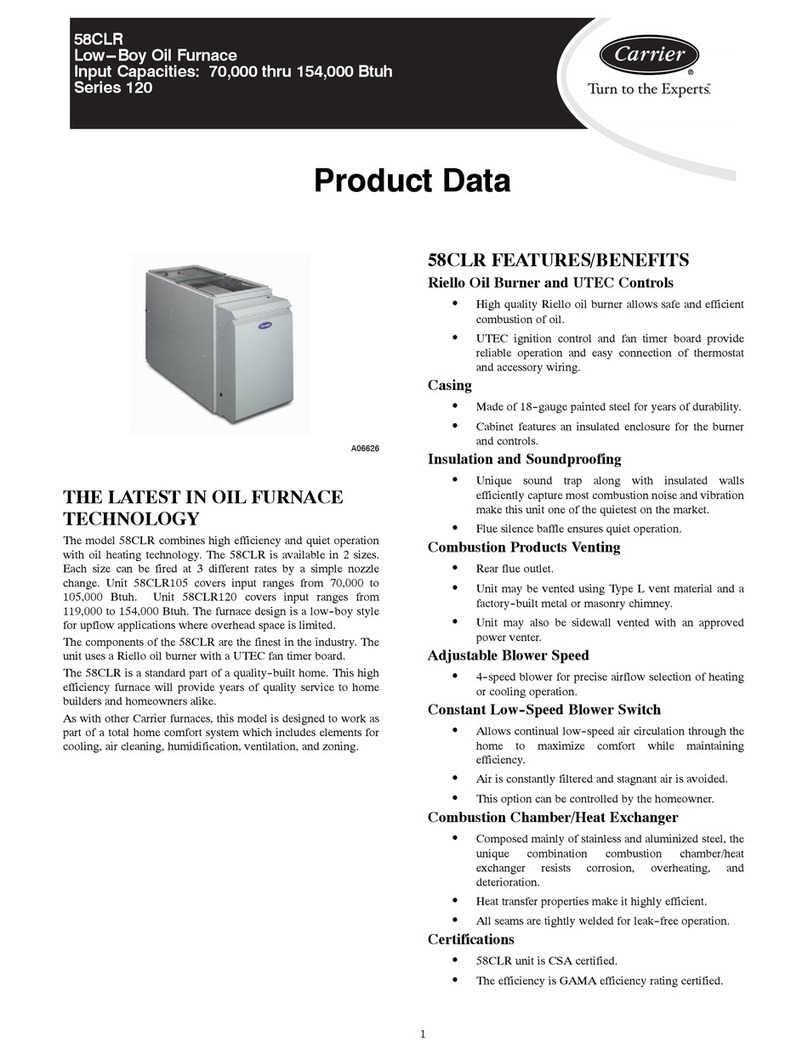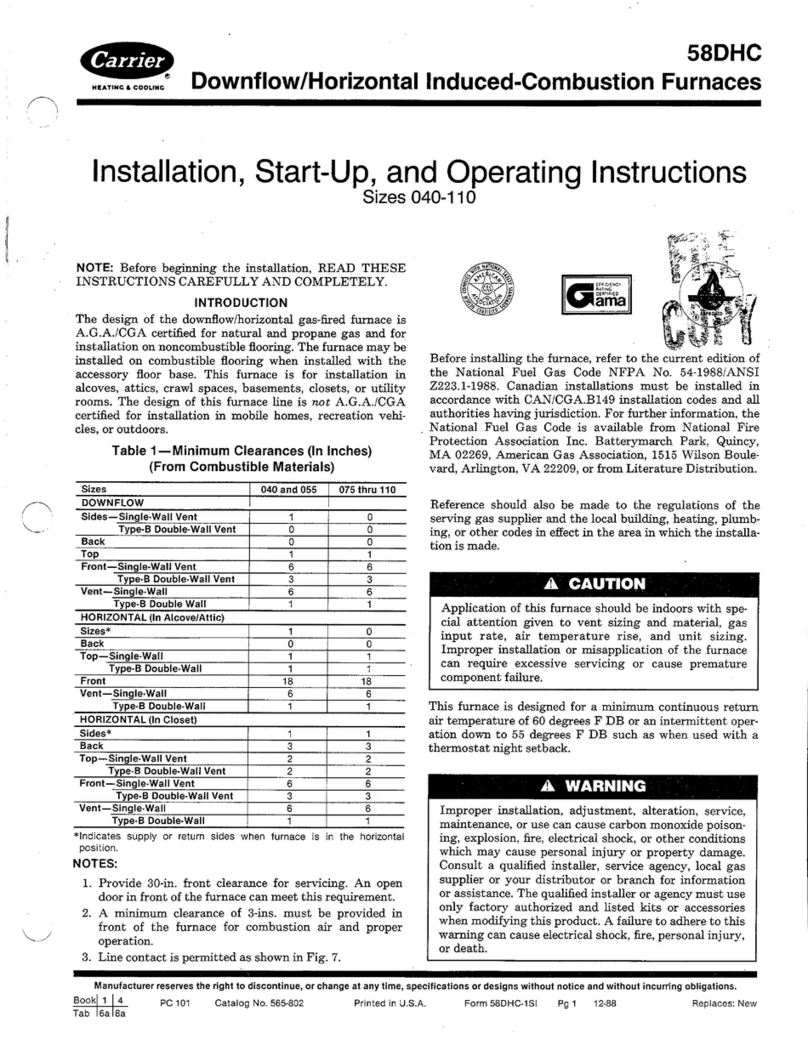
2.4 LOCATION Chimney installation only
IThis furnace is not watertight and is not designed for I
I
outdoor installation. This furnace shall be installed in I
such a manner as to protect the electrical components l
from water. Outdoor installation will lead to hazardous I
electrical conditions and to premature furnace failure. I
The unit must be installed in a location where the ambient
and return air temperatures are above 15_C(601:).
This furnace is approved for reduced clearances to
combustible construction; therefore, it may be installed in a
closet or similar enclosure. This unit may be located in a
basement or on the same level as the area to be heated.
Whichever the case, the unit must always be installed level.
In a basement, or when installed on the floor, as in a
crawlspace, it is recommended that the unit be installed on a
concrete pad that is 2.54 to 5.08 cm (1 to 2") thick.
The required minimum clearances for this furnace are
specified in Table 6
The furnace should be positioned as closely as possible to
the chimney or vent in order to keep vent connections short
and direct. It should also be as close as possible to the
centre of the air distribution system.
2.4.1 Air for combustion and ventilation
This furnace should be installed in a location in which the
facilities for ventilation permit satisfactory combustion of oil,
proper venting and the maintenance of ambient
temperatures at safe limits under normal conditions of use.
The location should not interfere with the proper circulation
of air within the confined space.
Refer to the CAN/CSA-B139 installation code for complete
regulations, and for guidance on retrofit applications.
When this furnace is installed in a closet or enclosure, 2
ventilation openings are required for combustion air. The
openings should be located about 15.24 cm (6")from the top
and the bottom of the enclosure at the front of the furnace.
Table 1 indicates the minimum dimensions required for each
of these two ventilation openings.
Table 1 : Minimum ventilation openings dimensions
required in a closet or enclosure
Input Width Height
(BTU/h)
75,000 - 105,000 0.4 mm (16") 0.20 mm (8")
120,000 - 155,000 0.5 mm (20") 0.25 mm (10")
The barometric draft regulator shall be installed in the same
room or enclosure as the furnace, in such a manner as to
prevent any difference in pressure between the regulator
and the combustion air supply.
Air requirements for the operation of exhaust fans, kitchen
ventilation systems, clothes dryers, and fireplaces shall be
considered in determining the adequacy of the space to
provide the required combustion air.
In unconfined spaces, in buildings of conventional frame,
brick or stone construction, infiltration may be adequate to
provide air for combustion, ventilation and dilution of flue
gases. This determination must be made on an individual
installation basis and must take into consideration the overall
volume of the unconfined space, the number of windows and
ventilation openings, the number of doors to the outside,
internal doors which can close off the unconfined space and
the overall tightness of the building construction.
Many new buildings and homes (even older ones that have
been weatherized) must be considered as being of tight
construction and, therefore, infiltration will not be sufficient to
supply the necessary air for combustion and ventilation.
A building can be considered as being of tight construction
when:
a. Walls and ceilings exposed to the outside have a
continuous water vapour retarder with a rating of one
perm or less, with openings hermetically sealed and/or;
b. Weather-stripping has been added on operable
windows and doors, and/or;
c. Caulking or sealant have been applied to areas such as
joints around window and door frames, between sole
plates and floors, between wail-ceiling joints, between
wall panels, at penetrations for plumbing, electrical and
fuel lines and at other openings.
If combustion and ventilation air must be supplied to an
unconfined space from the outside, an opening with a free
area of not less than 6.45 cm2 (one inch2) per 1,000 BTU
per hour of total input of all appliances within the unconfined
space, but not less than 645.16 cm2 (100 inches 2) must be
provided. This opening must be located such a way that it
cannot be blocked in any way, at any time.
2.4.2 Duct recommendations
When ducting supplies air to a space other than where
the furnace is located, the return air ducts must be
sealed and also be directed to the space other than
where the furnace is located. Incorrect ductwork
termination and sealing will create a hazardous
condition that can lead to bodily harm.
I
Do not block the combustion air openings in the I
furnace. Any blockage will result in improper
combustion and may result in a fire hazard and/or cause I
bodily harm. I
Return air grilles and warm air registers must not be
obstructed.

